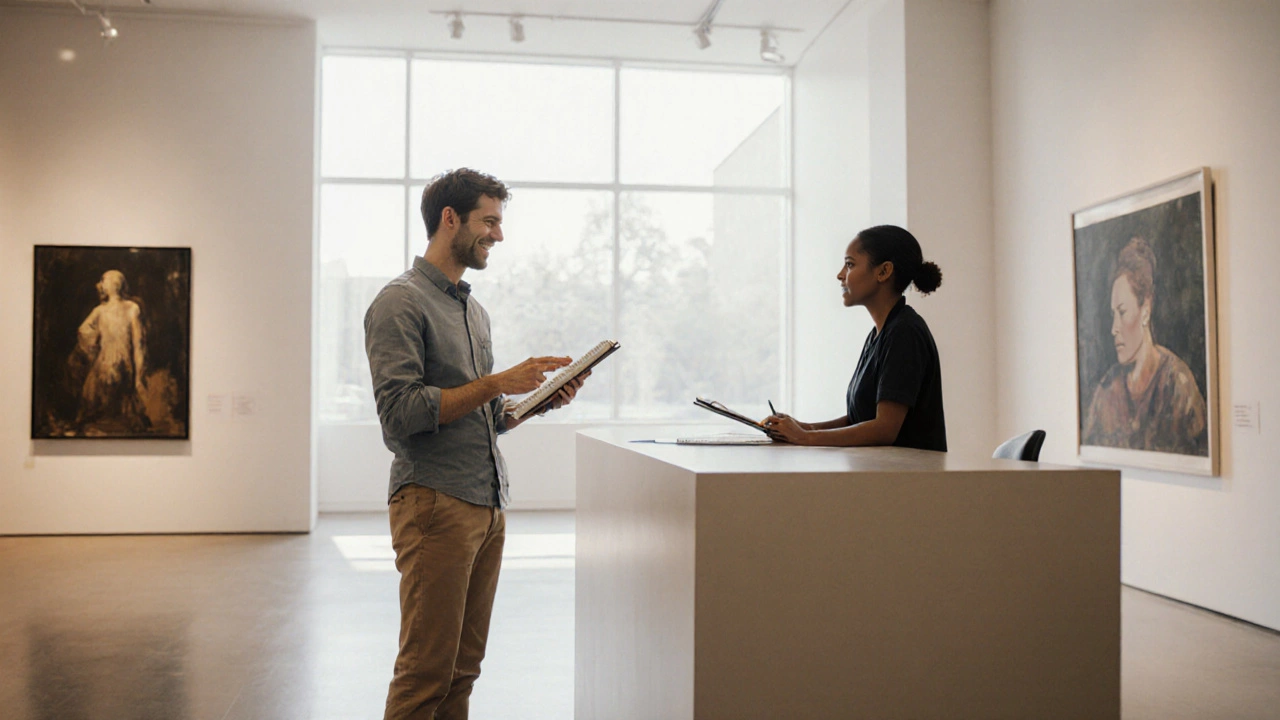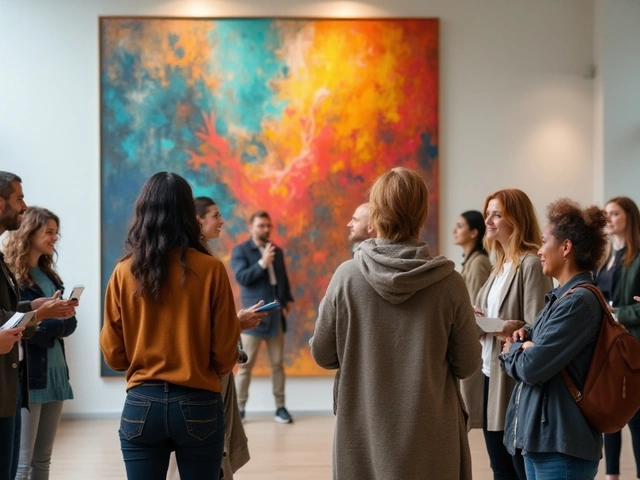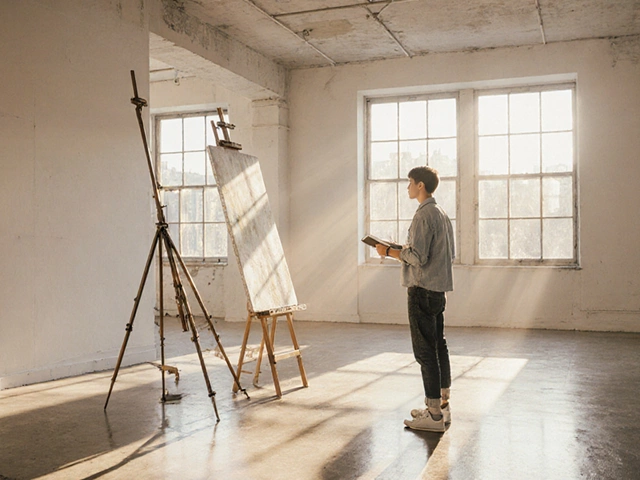Gallery Sketching Policy Checker
Sketching Policy Result
Public Museum
Generally allows quick sketches with permission. Dry media like pencil and charcoal are typically permitted. Flash photography is not allowed.
Commercial Gallery
Most commercial galleries do not allow sketching to avoid distraction for buyers. Photography may also be restricted.
University Gallery
Often permits sketching for students. May designate specific areas for sketching. Dry media are usually acceptable.
Temporary Exhibition
Policies vary. Always check signage or ask staff. Often limited to promotional material or reference-only activities.
When you step into a art gallery is a public or private space that displays visual artworks for the public to view, you might wonder if you can pull out a pencil and start sketching. The short answer? It depends on the gallery’s policy, the type of artwork, and local copyright rules. Below we break down everything you need to know about drawing in art galleries so you can enjoy the experience without stepping on anyone’s toes.
Key Takeaways
- Most galleries allow quick sketches if you ask permission first.
- Permanent collections are often protected by copyright; reproducing them may be restricted.
- Use a small, non‑glossy sketchbook and avoid touching the artwork.
- If a gallery says no, respect the rule and look for designated sketching areas.
- Alternative options include photography (where allowed) or studying high‑resolution catalogues.
Why Galleries Care About Sketching
Understanding the reasons behind the rules helps you communicate better with staff. Drawing is the act of creating images with lines, often using pencil, charcoal, or ink involves light, movement, and sometimes accidental contact with the artwork or its frame. Galleries worry about three main issues:
- Preservation: Even a stray pencil tip can damage a delicate surface.
- Copyright: Many works are still under protection, and reproducing them without consent can be illegal.
- Security: Staff need to monitor visitors, and sketching can be mistaken for suspicious behavior.
By respecting these concerns, you demonstrate that you’re a considerate visitor rather than a rule‑breaker.
How to Ask for Permission the Right Way
When you’re not sure about a gallery’s policy, a brief, polite request usually does the trick. Here’s a simple script you can use:
- Approach a staff member or the information desk.
- Say, "Hi, I’m an artist and I love studying the pieces here. Would it be okay if I made a quick sketch in my sketchbook is a bound collection of paper used by artists to capture quick studies?"
- If they say yes, ask if there are any specific restrictions (e.g., no flash photography, stay on the floor, keep the book closed when not in use).
- Thank them and follow the guidelines exactly.
Most staff members appreciate the courtesy and will happily accommodate you, especially if you’re brief and non‑intrusive.
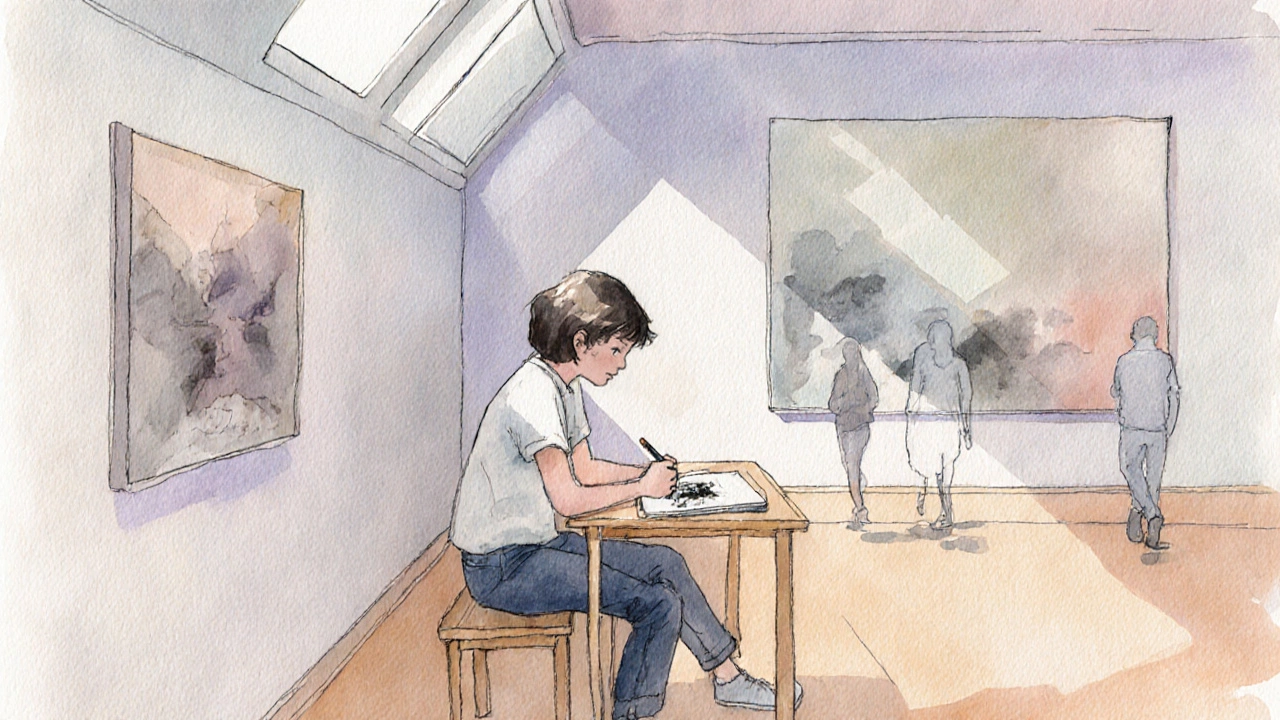
Typical Gallery Policies at a Glance
| Institution | Permission Needed? | Allowed Materials | Special Notes |
|---|---|---|---|
| Public museum (e.g., national galleries) | Yes - ask staff | Pencil, charcoal, non‑wet media | No flash photography; keep notebook closed when not in use. |
| Commercial art gallery (sale space) | Depends - many say no | Usually not allowed | Focus is on selling works; sketches may distract buyers. |
| University gallery | Often allowed for students | Pencil, pen, ink | May have designated sketching corners. |
| Temporary exhibition (pop‑up) | Varies | Check signage | Often limited to promotional material. |
The table above shows typical expectations, but each venue can set its own rules. Always verify on‑site.
Copyright Law Basics for Sketching
In North America, copyright lasts for the life of the creator plus 70 years. Many iconic works are still protected. Copyright law is a set of legal rights that give creators exclusive control over the reproduction of their work means you can’t publish or sell a drawing that copies a protected piece without permission.
What does that mean for you?
- Personal use: Making a sketch for your own study is generally fine, even if the work is still under copyright.
- Sharing online: Posting the sketch on social media can be a gray area; many artists choose to add a disclaimer or wait until the work enters the public domain.
- Commercial use: Selling prints of your sketch of a copyrighted piece is prohibited unless you obtain a license.
If you’re unsure, treat the drawing as “reference only” and avoid reproducing it verbatim for profit.
Practical Sketching Etiquette
Even with permission, good manners go a long way. Keep these tips in mind:
- Stay seated or stand still: Don’t wander around the artwork while drawing.
- Use non‑glossy paper: Glossy pages can reflect light and distract other visitors.
- Keep your tools secure: Put the pencil cap back on when you’re not actively drawing.
- Be respectful of fellow guests: If the room is crowded, consider waiting for a quieter moment.
- Don’t use flash or bright lighting: It can damage sensitive works and annoy staff.
Following these habits shows you value the art and the space, and it’s more likely you’ll be welcomed back.
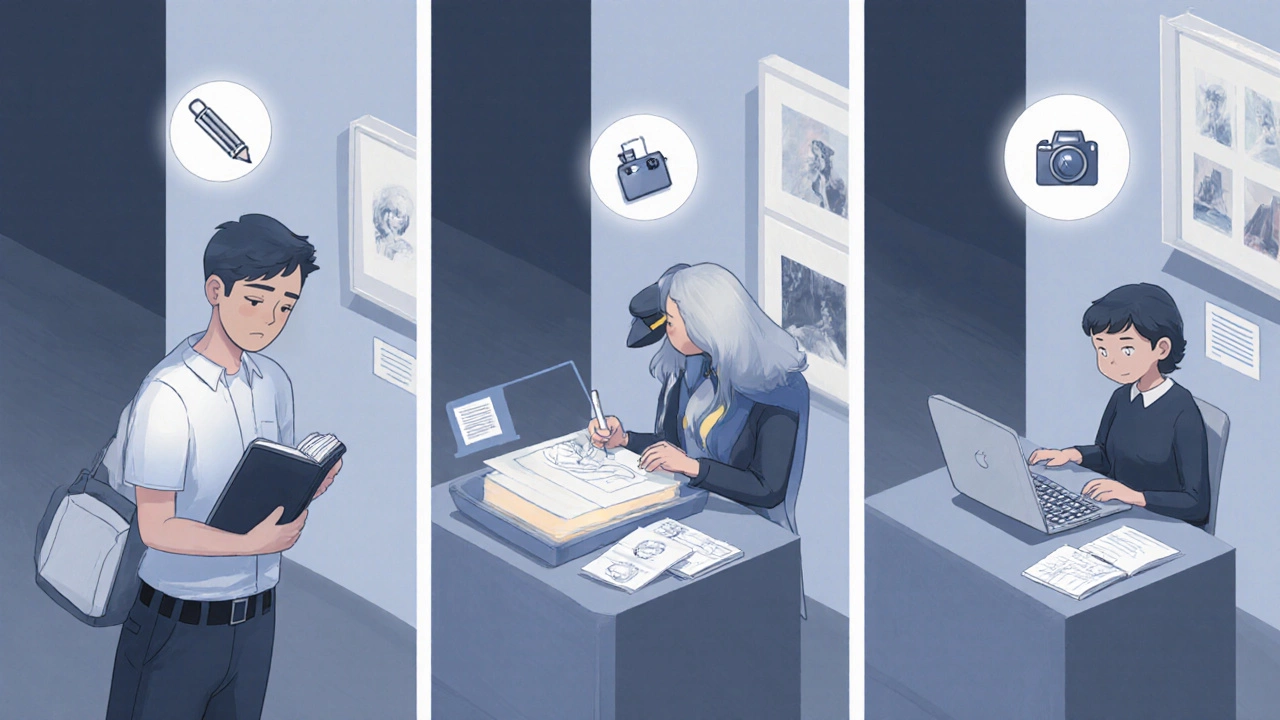
Alternative Ways to Capture Inspiration
If a gallery says no, you still have options:
- Photography: Some galleries allow photos without flash. Check the exhibition is a curated display of artworks presented to the public guidelines first. \n
- Take notes: Jot down colors, shapes, and emotions in a small notebook.
- Visit the gallery’s online catalogue: High‑resolution images can be printed for studio reference.
- Attend artist talks or workshops: Those sessions often encourage sketching.
These alternatives keep you inspired while staying within the rules.
What to Do If You’re Asked to Stop
Even with permission, a staff member may ask you to put your sketchbook away. Here’s how to handle it gracefully:
- Apologize immediately and thank them for their guidance.
- Put the sketchbook away and continue observing silently.
- If you’re confused about the reason, politely ask for clarification (e.g., "Is there a specific piece I should avoid drawing?").
- Leave the gallery with a positive attitude - you’ll likely return for another visit.
Remember, security staff is personnel tasked with protecting the artworks and ensuring visitor safety are there to protect both the collection and the visitors. Cooperation keeps the environment safe for everyone.
Quick Checklist Before You Pull Out Your Pencil
- Read any signage at the entrance.
- Ask a staff member for permission.
- Use only dry media (pencil, charcoal, pen).
- Keep your notebook closed when not sketching.
- Respect copyright - keep sketches for personal study only.
- Be mindful of other visitors and the space.
Frequently Asked Questions
Can I sketch a famous painting that’s still under copyright?
For personal study it’s generally acceptable, but you can’t publish or sell the sketch without the artist’s or rights holder’s permission.
Are digital tablets allowed for sketching?
Many galleries forbid electronic devices that emit light, but some modern museums have designated digital sketching stations. Ask staff first.
What if there’s no signage?
Treat it as a “no‑drawing” zone until you get explicit permission from a staff member.
Can I take a photo of my sketch inside the gallery?
Only if the gallery allows photography. Some institutions permit images of your sketch but ban photos of the artwork itself.
Is it okay to use colored pencils?
Colored pencils are fine as long as the gallery permits colored media. Some restrict you to graphite to keep the environment tidy.
